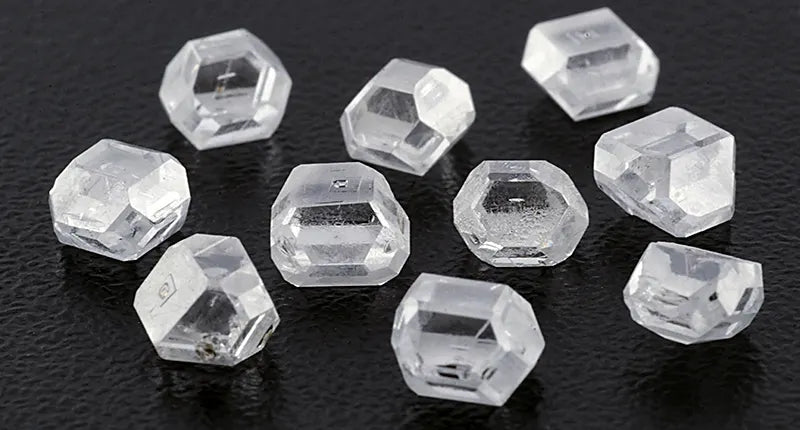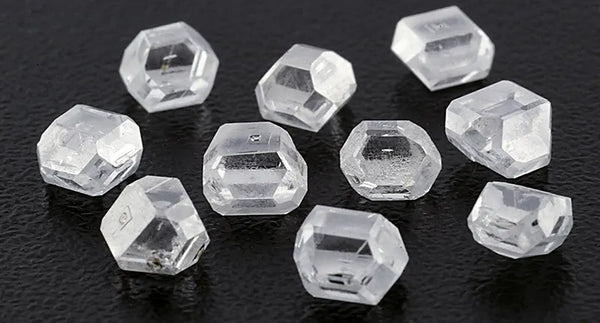
If you research diamonds, you will most certainly come across information about lab-grown diamonds as an alternative to naturally formed diamonds. Lab-grown diamonds are sometimes mistakenly called “fake” diamonds. But, the truth is, lab-grown diamonds are chemically and physically the same as those produced by Mother Nature. So, is there really any difference?
 Photo Credit: National Jeweler
Photo Credit: National Jeweler
Lab-Grown Diamonds
These are diamonds that are created in highly controlled lab conditions. Technicians recreate the heat and high pressure that occurs naturally. This results in a diamond that is created in just a handful of weeks, instead of billions of years. The diamond will have the same fire, scintillation, and sparkle as an organic one, and only a trained gemologist can tell the difference.
Lab-grown diamonds have flaws, as do natural ones, but these flaws are metallic inclusions from the molten solution where they are formed. While you can save some money with a lab-grown diamond, they have no resale value. The GIA grading system is different for lab-grown diamonds and after grading, the diamond is laser-inscribed with its report number and a given statement that it has been laboratory grown.
 Photo Credit: Hearts On Fire
Photo Credit: Hearts On Fire
Organic Diamonds
Organic diamonds are created deep in the Earth under very specific conditions. Natural diamonds form when pure carbon undergoes super high temperature and pressure over billions of years within the Earth’s mantle. The formation happens in a very narrow, and hot, zone 80 to 120 miles deep. Over millions of years of volcanic eruptions, the diamonds are brought nearer to the surface embedded in large chunks of rock. The rarity and uniqueness of an organic diamond is exactly what makes it so valuable.
Because of the heat and violent eruptions involved, finding a diamond that shows few flaws is even more rare. This is precisely why diamonds have been a symbol of love for so long. Like your love, they are rare and unique. Organic diamonds can grow to a size upwards of 400 carats, while lab-grown top out at about 20 carats. Modern science is good… but, it still hasn’t beat Mother Nature! The symbolism of giving someone a jewel that took over 1 billion years to create and such great effort to find is what makes organic diamonds so special.
 Photo Credit: Hearts On Fire
Photo Credit: Hearts On Fire
Diamond Alternatives
Other options include cubic zirconia and moissanite. True moissanite comes from space in the form of a meteorite that has fallen to earth. The moissanite you find in stores is laboratory created, and while they look similar to diamonds they are physically quite different. Cubic Zirconia was invented in a lab in 1976. It’s a synthesized crystalline diamond simulant mineral that is colorless, hard, and flawless. They are not made from carbon crystals, so they do not have the same brilliance as diamonds. For that reason, imposters sell at a much lower price that organic or lab-created diamonds.
Nature-formed, organic diamonds are chemically the same as lab-grown, but they are judged differently, and lab-grown diamonds do not have a resale value. Whatever type of diamond you decide to purchase, we recommend seeing it in person before you buy and choosing the one that speaks to you personally. If you still have questions, reach out to one of our experts.


